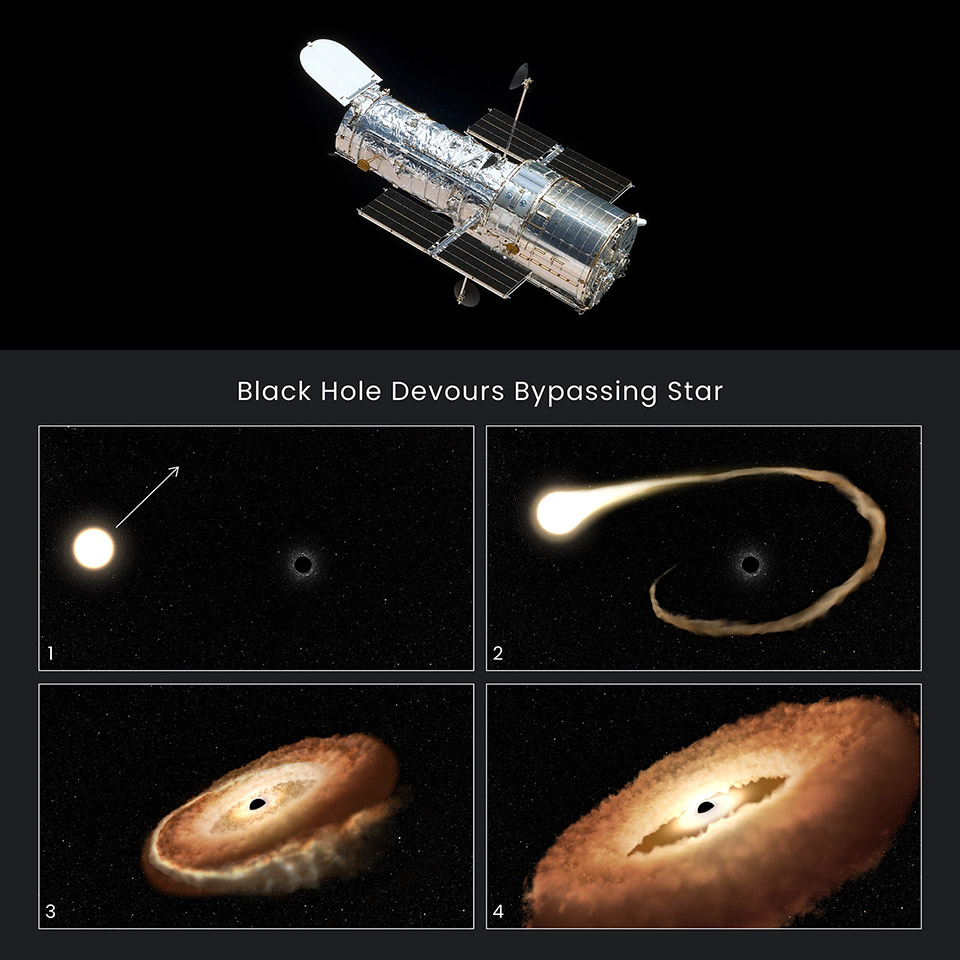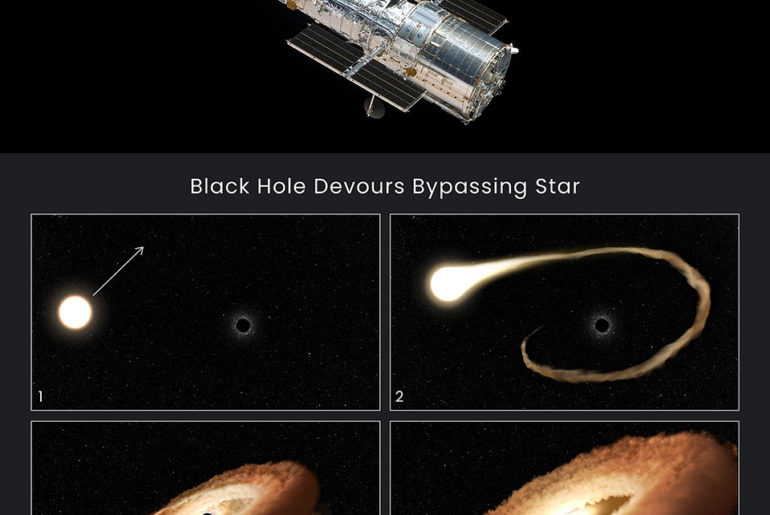
Another day, another perplexing Hubble Space Telescope observation. This time, the space telescope observed a star’s final moments, classified as AT2022dsb, in which it passes near a supermassive black hole in the center of a galaxy. Its outer gasses are then pulled into the black hole’s gravitational field and shredded as tidal forces pull it apart.
The stellar remnants left from the tidal event are pulled into a donut-shaped ring around the black hole, and this too will eventually fall into the black hole, resulting in a tremendous amount of light and high-energy radiation being released. At the edge of the donut is a stellar wind from the black hole sweeping over the surface that’s being projected towards us at speeds of 20 mph, or 3% the speed of light.
- POWERFUL TELESCOPE FOR ASTRONOMY BEGINNERS: The AstroMaster 130EQ delivers sharp optics, a stable equatorial mount, and smooth manual controls, making...
- HIGH-QUALITY 130MM OPTICS: Enjoy views through the 130mm (5”) Newtonian reflector, which features high-quality aluminum and SiO₂ coatings and...
- SMOOTH, ACCURATE POINTING: Effortlessly aim and center your target using the two slow-motion control knobs for right ascension and declination whether...
Typically, these events are hard to observe. You get maybe a few observations at the beginning of the disruption when it’s really bright. Our program is different in that it is designed to look at a few tidal events over a year to see what happens. We saw this early enough that we could observe it at these very intense black hole accretion stages. We saw the accretion rate drop as it turned to a trickle over time,” said Peter Maksym, Researcher at the Center for Astrophysics.






